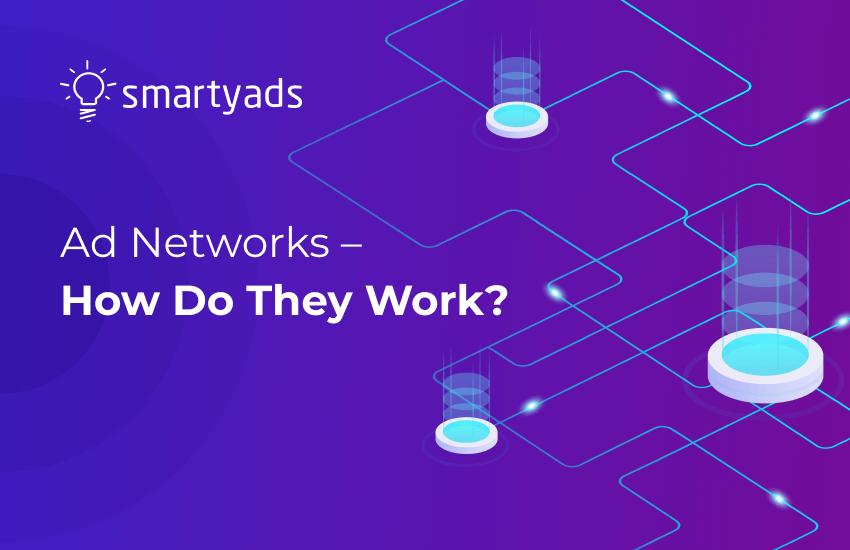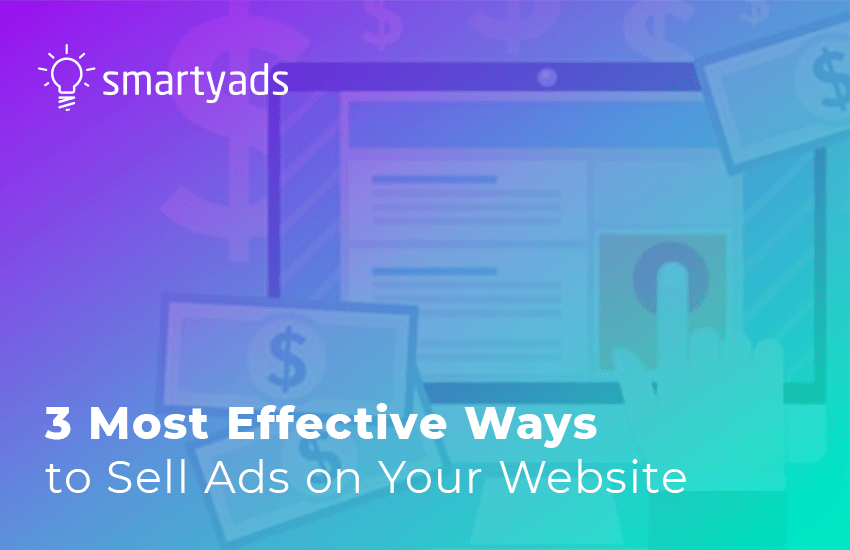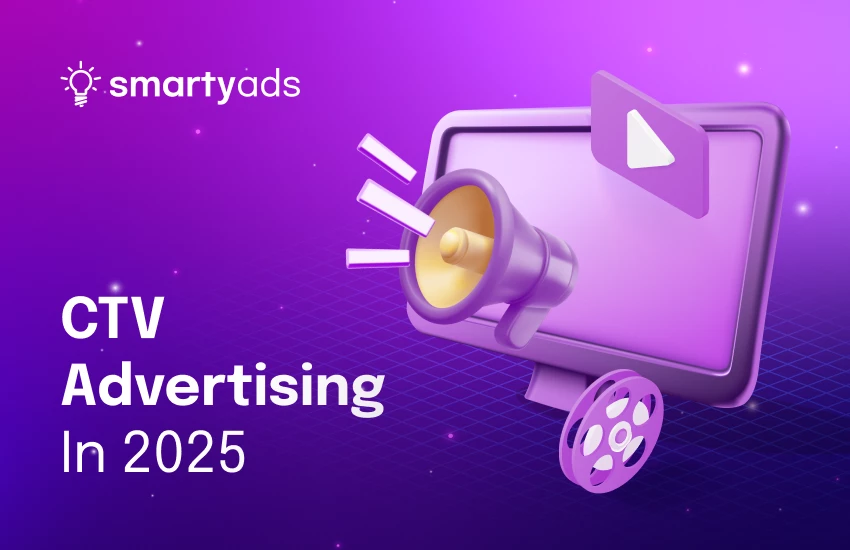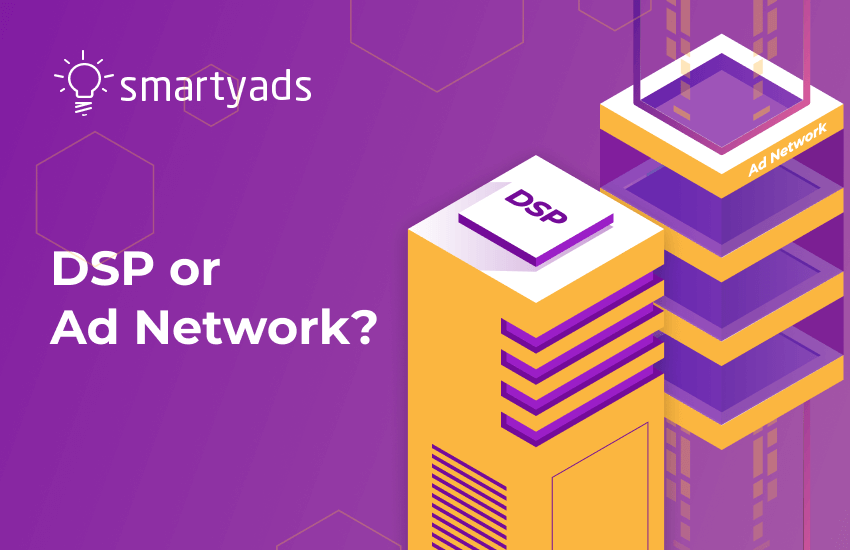Digital ad networks have been around for decades. Once publishers started to explore opportunities for monetization, they realized that the process of selling their digital space could be much more convenient. This could be achieved by creating a place where the inventory is gathered together and sold to the interested media buyers. Both sides win from this initiative, as buyers don’t have to spend much time looking for suitable placement while publishers don’t have to waste the inventory unsold via direct deals. That’s where they came in. To understand what is network advertising and its purpose, let us first start with ad network definition.

What is an ad network?
An ad network operates as a connector between content owners and brands, assembling available ad space and presenting it to those seeking visibility. It plays a key role in automated ad trading by offering reliable access on both sides—trusted exposure for media buyers and dependable demand for content providers.
These networks emerged in the mid-1990s, during a period of major shifts in digital promotion. Originally, their main purpose was clearing unsold space that couldn’t be placed through direct agreements. That space was then offered at reduced rates to a broad set of buyers. Today, the model looks different. Many platforms now concentrate on high-quality placements, working closely with established content creators and setting aside exclusive opportunities for brands ready to invest at a higher level.
So, with that definition in mind, it’s fair to say that ad networks streamline transactions—sourcing either leftover or premium placements, then matching them with those seeking safe and effective ad environments. Still, this brings up a valid point: how does this differ from what supply-side platforms or ad servers already handle?
How does an ad network work?
There are four critical stages to take into account:
Gathering media sellers
At first, the platform gathers a large list of media sellers interested in selling their inventory on an auction basis. Normally, a publisher digital advertising network earns profits by getting a share of revenue from selling media spots as packaged impressions.
Choosing placements
Then, media buyers who are looking for an inventory choose an advertising publisher network. Through the dashboard, they access campaign-management panels and set up campaigns where they indicate their requirements for the inventory. These include budget and pricing model, targeting or retargeting options, as well as frequency caps, and others. Many media buyers use multiple platforms combined with direct deals with media sellers. That’s why they also add tracking pixels from third-party servers for reporting and measurements of campaigns and tracking performance.
Making a deal
When the demand and supply sides match, the impression details stored in the request are delivered to media sellers. Media sellers insert tags provided by the platform into their web pages, which enable automatic fetching and further displaying creatives to their visitors when called upon.
Maintaining the campaign
After everything is published, the campaign-management platform’s panel allows media buyers to switch between multiple creatives. When those solutions were first introduced, media sellers used just one direct solution to increase their yield by selling the remnant inventory. As the industry grew, their fill rates dropped, so media sellers turned to multiple ad platforms, using some of them for trading premium inventory and the others for regular or remnant.
When media spots are sequentially offered to media buyers in priority order, this strategy of media trading is called waterfalling and is opposed to header bidding, which is often more transparent, as all of the space at auction is offered simultaneously.

Ad networks and the programmatic advertising ecosystem
Let’s discover some key differences between programmatic platforms:
Ad Network vs Ad Server
As the industry started to grow more complex, the number of ad tech platforms also started to grow, and nowadays it becomes more and more difficult to differentiate them. The difference is not that hard to tell once we get a clear definition of what is an ad server. A server is a piece of tech used for hosting, management, and advertising message distribution across various platforms, websites, and apps. They are also sometimes called “ad tracking systems” or “campaign management platforms,” which underlines that they are primarily used for management, storage, and service of campaigns and creatives. In contrast, the network’s main function is managing the buying process between buyers and sellers.
Ad Network vs SSP
One could probably notice that both ads networks and SSPs are used to collect and sell inventory, so on the general level, these pieces of tech are quite similar. On a more in-depth level, however, there are a number of significant differences in terms of their clients, functionality, plus other factors. Typically, SSPs are used to sell ads via programmatic technology. In order to handle and optimize this process, SSPs use machine-learning algorithms and real-time bidding.
With the digital ad networks, things are slightly different, as for some of them, many optimization tasks must be done manually, and their typical users are now premium sellers and buyers. Most platforms use direct deals only for premium spots, leaving other arrangements for real-time bidding platforms.
On top of it, SSPs only work with the supply side (media sellers), while networks are used by both parties, so their function is more comparable to the combination of SSP and DSP. For some advertisers, DSP vs Ad Network is a hard choice. Others prefer using both – the right choice always depends on your business needs.
Ad Network vs Ad Exchange
Now, this is the tough one, since the line between an online ad network and ad exchange is not so clear. Both are solutions that gather inventory from publishers and sell it to advertisers, and both can work with DSPs and SSPs. Let’s take a quick look at the two.
Exchange is a marketplace created for both sides of the media trading, where parties can trade any type of spots without mediators, so both sides know who they are trading with. In contrast, the first is usually a company that gathers media sellers and media buyers based on specific categories of advertisement. They work as an intermediary between the demand and supply.
Today, it is not uncommon for advertisers to buy inventory through display ad networks. In fact, the market of digital advertising is so huge that network ads tend to specialize and focus on more specific areas. For example, one platform works exclusively with mobile advertising, while others only deliver video ads.
Some brands identify themselves as website advertising networks, while others prefer to work with remnant inventory. This specialization makes the market even more structured, as now buyers can, for example, find a specific option that supplies only premium video spots.
This way, they don’t have to spend time sifting through dozens of options in search of this specific supply, while publishers can be sure their inventory won’t be wasted. Such a proprietary solution can become a significant source of additional revenue, so it might be a good idea to create your own ad network so that aggregating only specific traffic and selling it becomes possible and easily achievable.
Types of advertising networks
Most popular types of ad networks include:
Premium-specialized
Those options only work with top-tier media sellers. They are usually very selective about their partners and the quality of their space. These are also useful for publishers who want to preserve premium pricing in exchange for exclusive access to the inventory.
Vertical-specialized
These include fashion, business, automobiles, and technology - any website or brand working in a particular niche can enter the network. This type is very useful if you have a niche-oriented website. Choosing the right topic-specific network advertisements can save you lots of time and sometimes even give you clear access to your target audience.
Niche-specialized
Just like vertical platforms, these are usually restricted to some specific type of ad placements. An example of an inventory-specific platform can be a network that only works with video ads or mobile ad formats. As with vertical platforms, choosing the right network can make media trading much more effective.

Benefits of ad networks for advertisers and publishers
Wider market reach
With these solutions, advertisers along with media sellers get more opportunities to buy or sell ad spaces. For publishers, there is a good chance to increase their revenue dramatically by offering premium or remnant placements. Tese platforms ensure that publishers get the highest paying bids. At the same time, internet advertisers work through these platforms, so they can easily find any specific type of placements in accordance with their budget.
Increased ROI
For both parties, wider opportunities also mean higher revenue. Media sellers put up their unsold placements on RTB auction or pre-sale their premium spaces for a good value directly. In any case, such solutions serve as a significant addition to their revenue. For advertisers, benefits depend on the quality of ads, but with precise matching powered by programmatic, at least they are able to choose the most profitable deals.
Saved time
Automatic matching of publishers and advertisers is extremely convenient. The main benefit of for advertisers is that there is now no need to manually look for suitable deals or favorable prices – all of this is done automatically. Impressions from the best sellers are now easily accessible to anyone. This is solid ground, ensuring that most of their inventory will be sold for the best price.
Greater competition
This benefit is greatest if you are a publisher. They deliver sharp, relevant creatives designed to drive strong results on your site. A broader mix of ads boosts exposure and interaction, increasing the odds of turning traffic into profit. Greater competition means higher costs per impression and more intelligent media placement over time. This constant optimization keeps revenue climbing without extra effort on your part.
Advanced targeting
They empower both sides with powerful audience intelligence. Advertisers gain access to granular targeting options—based on behavior, location, device, and more—allowing them to craft campaigns that reach exactly the right users at the right time. For media sellers, this means serving ads that align closely with user interests, resulting in higher engagement, better user experience, and ultimately, stronger monetization potential.
How to choose the best ad network?
There are many factors worth considering when choosing such tech. It is essential to choose and understand their business goals, target audience, favorable digital ad formats, targeting, suitable business verticals, reporting options, and pricing models. It is important to remember that there are different types of suc tech, and some of them can be more suitable for your specific business goals.
The future of ad networks in programmatic advertising
If we talk about future trends, you need to know that there are various types of ad networks that evolve with lightning speed. What will define their evolution like five or ten years from now? Let’s see:
- AI-driven optimization
Algorithms analyze user behavior, time of day, and past performance to auto-adjust bids, formats, and messaging in real time. This ensures better placement, higher engagement, and reduced waste.
- Contextual targeting 2.0
Modern NLP engines scan page content, tone, and sentiment to place ads that match user mindset—not just keywords. This creates more relevant, privacy-friendly experiences that still convert.
- First-party data leverage
With cookies phasing out, media sellers and brands focus on collecting direct user data through logins, subscriptions, or interactions. This clean, consent-based input fuels better targeting accuracy and loyalty.
- Unified ID frameworks
Solutions like UID2.0 or Google’s Privacy Sandbox aim to replace cookie-based tracking with secure, user-consented identity tokens. These help maintain frequency capping, attribution, and retargeting across channels.
- Creative automation
AI tools generate thousands of commercial variations on the fly, adapting headlines, visuals, and CTAs to fit user preferences, time zones, or devices. This hyper-personalization boosts relevance without extra production time.
- Predictive analytics
Smart systems evaluate factors like ad placement, audience segment, and historical data to predict which impressions will convert before bidding. This preemptive insight helps advertisers win more valuable views efficiently.
- Sustainability metrics
New frameworks measure carbon output per impression, factoring in server load, file size, and delivery path. Networks then prioritize lighter creatives and cleaner supply paths to meet eco-conscious standards.
- Immersive formats
User experiences evolve beyond static banners into AR try-ons, shoppable 3D models, and interactive CTV content. These formats engage longer and deliver better brand recall by blending with native environments.
- Voice-ad integration
Voice search and smart speaker use prompt a rise in audio ads with responsive capabilities. Users can interact with prompts like “Send me this offer” or “Remind me later” without clicking.
- Privacy-first design
AdTech begins with built-in protections—data is anonymized, encrypted, and minimized before use. Campaigns focus more on cohorts and context than individuals, aligning with tightening global regulations.
To conclude
Ad network is a useful tool for advertisers, along with publishers. It can gather media based on certain criteria and sell it for the best price that suits buyers and sellers alike. Nowadays, as the market has evolved, the number of such solutions continues to grow, so most of them have started to specialize in specific verticals along with types of inventory. A well-developed niche-specific option can provide your business with an additional revenue stream.
Elevating your campaigns is possible with SmartyAds DSP!





